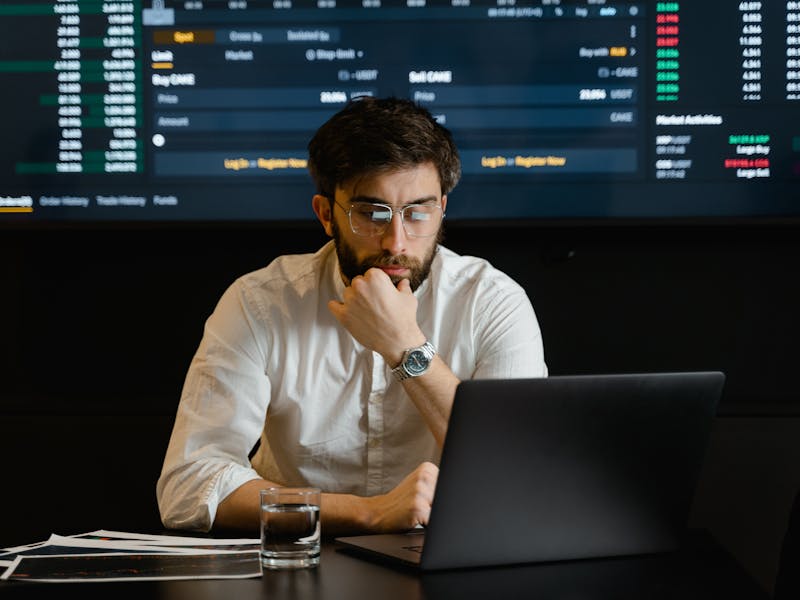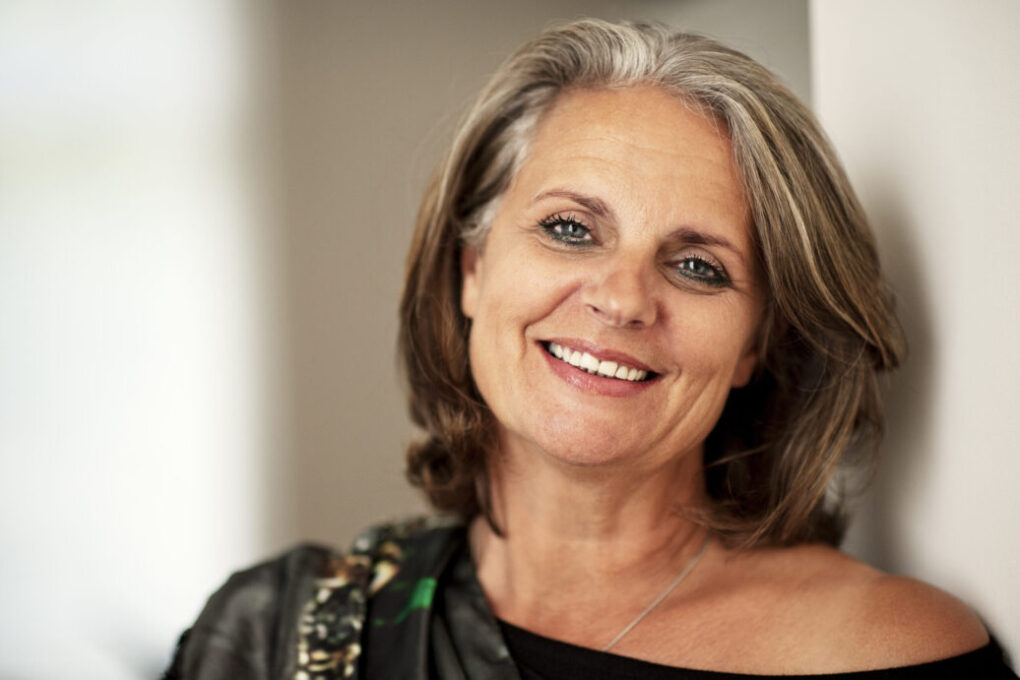The most enduring contributions often come from those who adapt, those who respond to changing times, technologies, and needs with curiosity and purpose. True innovation happens not in isolation but at the intersection of evolving ideas, shifting societal challenges, and the drive to create something lasting.
For over five decades, Richard Larson has embodied this spirit of adaptation and impact. As a professor at MIT and a leader in operations research, Richard has dedicated more than fifty years to advancing how we model and solve complex problems. Known as Doctor Queue for his influential work in queuing theory, he has helped shape systems and strategies that improve decision-making across sectors. His work stands as a testament to the power of interdisciplinary thinking, where mathematics, engineering, and human insight converge to create lasting solutions.
The Mind Behind Modern Queuing Models
Richard has dedicated his career to studying the systems that quietly shape our everyday experiences. Over the years, Richard has worked across five academic departments, each aligning with the evolution of his interests. His primary focus? Operations research is the study of how operations function. He fondly refers to it as “the physics of the day-to-day world.”
Among his many accomplishments, Richard earned the nickname Doctor Queue, a title well-deserved thanks to his extensive work in queuing theory. A quick Google search for “Doctor Queue” brings Richard’s name right to the top.
Early in his career, Richard spent two full years developing the Hypercube Queuing Model. This model factored in both the timing (temporal aspects) and location-based interactions (spatial aspects) that are critical in emergency services. Through his career, Richard’s work was at the intersection of science, human behavior, and real-world impact.
The Unplanned Journey of Purpose
Richard’s path into education and learning innovation began almost by accident. He grew up in Needham, Massachusetts, just south of Lexington, where he lives now. This town is known as the birthplace of the American Revolution, celebrated each year during Patriots’ Day weekend. After finishing high school in Needham, Richard entered MIT as a wide-eyed 18-year-old freshman, not knowing just how deeply the institution would shape his future.
He stayed at MIT through his bachelor’s, master’s, and Ph.D. studies, never expecting his academic journey to extend beyond being a student. But then, an unexpected opportunity appeared. His faculty counselor, Professor Alban W. Drake, asked if he’d consider staying on as an assistant professor for a couple of years before heading off to industry to, as he jokingly put it, “make his millions.”
Richard wrestled with the decision, affected by what he calls the Groucho Marx syndrome, the idea that he couldn’t quite trust any organization that would want him as a member. The thought of becoming faculty at MIT felt unreal, almost out of reach. Yet, despite his doubts, he said yes.
That temporary plan turned into a lifelong commitment. He stayed, earned tenure, and eventually became a chaired professor. More than fifty years later, MIT remains at the center of Richard’s life, a place where meritocracy and acceptance thrive. It’s a community that continues to energize and inspire him, decade after decade.
Empowering Minds Across Borders
For Richard Larson, education has always been more than just information; it’s a ladder, one that lifts people from wherever they start toward limitless heights.
Unlike material possessions, a car, a boat, or even a plane, education is something no one can take away. Once knowledge is earned, it belongs to the individual. It becomes a permanent part of the mind, a personal asset that travels with them throughout life.
This belief fuels Richard’s passion for making education accessible to everyone, including those from the most disadvantaged communities. He’s witnessed countless stories of individuals who, despite humble beginnings, leveraged education to achieve extraordinary success, some even reaching the halls of MIT or earning advanced degrees elsewhere.
Turning a Simple Idea Into Global Impact
Back in the early days of the internet, when its potential was still largely unexplored, Richard saw something that sparked a vision for the future of education. He recognized how powerful the internet could be as a tool for democratizing learning, making high-quality education accessible to anyone, anywhere.
This realization crystallized during a visit to China early in his career. While spending time in Hong Kong and Beijing, Richard asked to visit a remote, impoverished village. What he saw there stayed with him. In that village, where economic resources were scarce, a local teacher was using videotapes of a world-class instructor from Hong Kong to teach the students. The teacher would pause the video periodically, engaging the class in questions and dialogue about what they had just watched.
That moment left a lasting impression. Richard began to wonder: What if educational videos were intentionally designed to pause and prompt interaction? What if this method could be used to connect students everywhere to high-quality instruction?
Returning to MIT, he shared this idea with colleagues, and together they developed BLOSSOMS, short for Blended Learning Open Source Science or Math Studies. Like its name suggests, BLOSSOMS represents growth and potential. It offers over 60 interactive lessons designed for high school math and science classes, freely available worldwide on platforms like YouTube. These videos typically run for three to five minutes, then pause to allow in-class teachers to engage directly with their students. The goal is to spark conversation, critical thinking, and active participation, rather than just passive watching.
BLOSSOMS became a groundbreaking step in making education more equitable worldwide. Once these interactive lessons were made available online, they reached classrooms not just in the United States but also in South Africa, India, Beijing, remote villages in China, North Dakota, and anywhere there was an Internet connection. It was the beginning of a global effort to harness technology in the service of learning for all.
The Lesson That Changed Everything
One particular challenge stands out in Richard’s memory as vivid as a scene replayed on an endless loop. During his early years at MIT, while serving as a teaching assistant, Richard was leading a class of about 68 students in a large lecture hall. He stood at the blackboard, working through homework solutions, and confidently wrote out an equation that answered one of the problems. Mathematically, it was correct. But then a student raised his hand.
“Professor Larson, thank you for that equation,” the student said. “But could you explain it to us intuitively, so we understand the why behind it, not just the algebra?”
That question stopped Richard cold. At that moment, he realized he hadn’t prepared deeply enough to explain the concept beyond surface-level math. He hadn’t anticipated needing to convey the intuitive meaning behind the equation, and standing there, unable to respond fully, left a lasting impression.
It became a turning point in his career, a formative lesson he’s carried ever since. From that day forward, Richard made a promise to himself: never again would he walk into a classroom, a conference, or a professional meeting without knowing the material inside and out. He wanted to be prepared not just to present but to engage, explain, and answer whatever questions might come his way.
And to the best of his ability, he’s upheld that standard for the rest of his career. For Richard, it was a powerful reminder that mistakes, especially the ones that rattle us, can be some of life’s greatest teachers. As long as we learn from them and grow, they serve their purpose.
Bringing Model Thinking to Everyday Life
Even on the tough days, when progress feels slow or plans veer off course, Richard finds purpose in the work that continues to inspire him.
Now in his early 80s, Richard is technically retired from MIT. He no longer teaches live classes or supervises students. But retirement hasn’t meant slowing down. Instead, it’s opened up space for a new chapter, one focused on sharing the power of model-based learning with a broader audience.
One of the projects closest to his heart is his book, Model Thinking for Everyday Life, published two years ago. The work captures his passion for helping others apply model-based reasoning to the everyday decisions and challenges they face. For Richard, the word model carries a dual meaning: it represents exemplary thinking, ideas worth emulating, as well as conceptual or mathematical frameworks that help make sense of complex situations.
This mission has taken him beyond the traditional classroom. He’s appeared on radio, television, and various media platforms, spreading the message of how operations research and structured thinking can benefit people in their daily lives. Whether through lectures, writing, or community programming, Richard remains driven by the desire to make these powerful tools accessible to all, continuing to brighten minds, even in retirement.
The Human Side of Great Educators
For Richard, the mark of a truly great educator extends far beyond the classroom. It’s not just about delivering content, it’s about engaging with students on a personal level.
To be effective, he believes an educator must take the time to sit down with students individually, getting to know who they are, what they excel at, where they struggle, and what holds them back. It’s in these honest conversations that real learning begins.
Showing students that they’re more than just a name on a class roster, that they matter as individuals, is at the heart of Richard’s philosophy. This level of care, combined with genuine engagement and interaction, is what transforms teaching into something lasting.
For Richard, that’s the key: connecting with students, encouraging their growth, and guiding them not just academically, but in life.
When Math Meets Real-World Impact
One project still holds a special place in Richard Larson’s heart after all these years, a collaboration with the City of New York that combined his love for mathematics with real-world problem-solving.
At the time, the city needed a mathematical model to improve how police and ambulances responded to emergencies. Richard took on the challenge as a consultant, dedicating two full years to designing and programming a complex model known as the hypercube queuing model. It was the last major piece of software he ever coded himself. The system was so intricate that Richard knew handing it off to someone else might introduce bugs, so he painstakingly did it on his own.
There were moments when the technical problems felt insurmountable. One night, after struggling with a particularly stubborn issue, getting the model to converge to a steady-state solution, Richard dreamt the answer. At three in the morning, he shot out of bed, scribbled down the solution that had come to him in his sleep, and returned to bed with a smile. That breakthrough remains one of his fondest memories.
Before 911, New Yorkers had to navigate over 20 different phone numbers depending on their location and the type of emergency, police, fire, or ambulance. The new system promised simplicity, but in practice, it faltered.
Richard remembers reading letters to the editor in The New York Times, where citizens shared harrowing stories, waiting 28 minutes for an answer after dialing 911. Alarmed, he volunteered to help the NYPD understand the science behind call scheduling. Using queuing theory, he worked closely with two police lieutenants for over a month, analyzing call volumes and designing a more efficient operator schedule.
His recommendations faced skepticism. During a key presentation, the police chief, known for being tough, interrupted, dismissing Richard’s analysis as absurd. But when the lieutenants backed Richard up, confirming the accuracy of his data, the chief’s attitude shifted. Within a week, every recommendation was implemented, the fastest rollout Richard has ever seen.
Richard firmly believes that those changes, reducing queuing delays for 911, likely saved lives. That project, blending theory, code, and real-world impact, remains one of the most meaningful chapters of his career.
Learning from Legends, Teaching with Heart
Throughout his journey, Richard has been deeply influenced by a remarkable group of educators, thinkers, and mentors who left a lasting imprint on both his work and personal outlook.
Among the first was his faculty advisor at MIT, the late Professor Al Drake. Known for his exceptional teaching, Drake left an indelible mark on Richard’s academic life. Just down the hall from Drake’s office was Professor Philip M. Morse, then director of the MIT Operations Research Center. Richard came to know Morse well, admiring not just his intellect but his commanding presence as a speaker.
As a student, Richard found himself in classrooms led by some of the most notable names in their fields. During his sophomore year, he took circuit theory with none other than Amar Bose, the founder of Bose Corporation, famous worldwide for high-quality audio systems. The idea that someone of Bose’s stature was teaching him directly was almost unbelievable.
Surrounded by these superlative teachers, Richard couldn’t help but be inspired. Their passion and skill motivated him, and when the opportunity arose for him to step into a teaching role, he knew he could never fully match their brilliance. Still, he believed that by giving his best, he might engage students in meaningful ways, perhaps even help redirect a life or two.
MIT, with its wealth of talent and spirit of innovation, has been the perfect environment for Richard. Over the course of his career there, he’s called five different academic departments home, continuing the cycle of learning, teaching, and inspiring that once shaped him.
Spreading Ideas, Shaping Minds
Right now, Richard is exactly where he wants to be, focused on outreach and sharing ideas beyond the walls of academia.
His current passion lies in connecting with the public. Over the years, he has participated in radio and TV interviews, delivered live talks in his hometown of Lexington, Massachusetts, and spoken at colleges like Madison College. Each opportunity offers a chance to engage new audiences and spark curiosity.
What drives him these days is spreading the concept of model thinking, a way of approaching problems and understanding the world through structured frameworks. Sharing these ideas, helping others see their value, and encouraging critical thinking has become his central focus.
For Richard, this isn’t about moving away from his career, it’s about expanding it into new spaces, reaching people who might not otherwise encounter these kinds of concepts. It’s a continuation of his lifelong mission to make learning accessible, meaningful, and relevant to a broader audience.
Balancing AI and Authentic Learning
Richard Larson considers himself a bit old-fashioned when it comes to learning. For him, the best kind of learning often happens with the computer turned off, a few sharpened pencils in hand, and plenty of blank sheets of paper ready to be filled.
This philosophy shaped the way he wrote his latest interactive learning book. Every few pages, Richard pauses the content and asks readers to reflect on what they’ve just read. He poses questions and encourages readers to jot down their thoughts by hand. He believes this process, using pencil and paper, creates a deeper, more lasting learning experience than typing on a screen.
When writing the preface to the book, Richard even went so far as to state that pencil-and-paper learning is superior to computer-based methods. At the time, he didn’t have a formal citation to back up that claim. But research since then has confirmed what he instinctively felt: the act of writing by hand creates pathways in the brain that strengthen memory retention. The physical motion of writing helps embed information in ways that digital methods often can’t replicate.
Looking ahead to the future of learning, Richard sees both opportunities and challenges, particularly with the rise of artificial intelligence. AI, he says, holds tremendous power but also carries significant risks. One of the most concerning trends he sees is students relying on AI tools to complete homework assignments for them, outsourcing the learning process entirely.
For Richard, this misuse of AI threatens to erode the very skills that education is meant to develop. He advocates for putting the computer aside when it’s time to engage deeply with material. Human intelligence, HI, as he calls it, needs to remain at the center of learning. While AI can assist, it’s the individual effort, the reflective thought, and yes, even the scribbling of notes with a pencil, that truly makes learning stick.
Shaping the Future of Applied Knowledge
Richard considers himself fortunate to have reached a point where he could give back to the institution that shaped so much of his life. MIT, in his view, has been the best possible environment for someone like him, a place where ideas and action meet. As a gesture of gratitude, Richard endowed a fully funded chair at the Institute for Data, Systems, and Society (IDSS), a gift intended to support future leaders in the field. The chair, which will bear his name, the Larson Chair, represents more than just a title. It’s a call for the next generation to follow in his footsteps.
What Richard hopes most is that whoever holds that chair one day will blend the roles of practitioner and theoretician, just as he has throughout his career. He never saw himself purely as an academic. First and foremost, Richard is a practitioner, someone who believes deeply in taking ideas off the page and into the world. He reminds his students that to truly understand something, you need boots on the ground. That philosophy carried over into the consulting company he ran for 40 years, which at its peak employed over 30 full-time staff. Together, they took on projects across many cities, engaging directly with real-world systems and challenges.
That hands-on work didn’t stay separate from the academic world. Many of those experiences found their way back to MIT, shaping master’s theses and PhD research topics for his students. For Richard, that’s the kind of legacy that matters, using operations research not as an abstract, theoretical discipline, but as a tool to solve real problems in daily life.
He often draws comparisons between operations research and physics, not the physics of pendulums or particles, but the physics of everyday life. Richard hopes to pass on that blend of practical application and theoretical understanding. His legacy isn’t just in the ideas he’s developed, but in how they’re used to make life better, smarter, and more efficient for the world outside the classroom.
The Power of Staying Curious and True
If Richard could offer just one piece of advice to anyone hearing his story, it would be simple yet profound: stay true to yourself.
He believes curiosity is the key. Engage fully with life, ideas, and the world around you. Perhaps most importantly, bring a sense of model thinking into the way you approach everyday life. Not necessarily in a strict academic sense, but as a practical tool, something that helps navigate decisions, relationships, work, play, and the networks of friendship that enrich life.
For Richard, this mindset isn’t confined to classrooms or research labs. It’s a way to make sense of life’s complexities, to find meaning and joy in both work and leisure. That’s the message he hopes will stick.
Follow Leadership Time on LinkedIn
















Leave a Reply